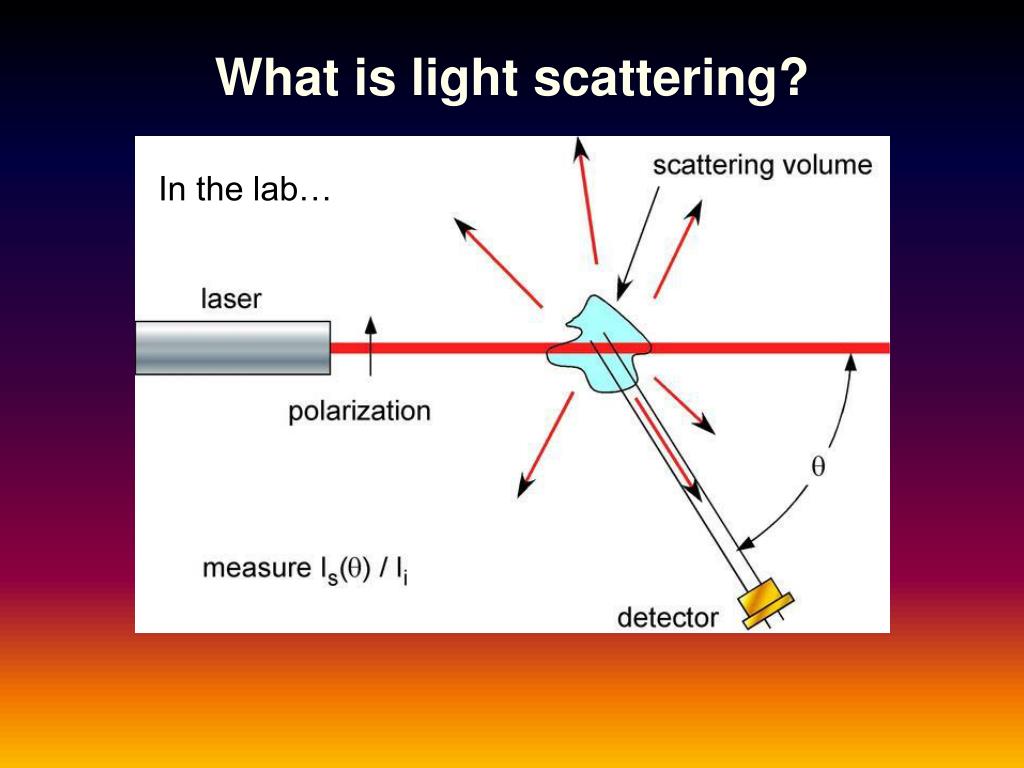

For this you compare the intensity of the scattered light at two different moments on the same intensity track to receive the correlation function. The already discussed autocorrelation function serves as a mathematical description of the fluctuations of the scattered light and is used to determine the diffusion coefficient. As this transfer of energy is relatively constant, it has a bigger influence on smaller particles so they move much faster than bigger ones. Energy is passed on through these collisions of molecules, which causes particle movement. Thanks to this physical model from the 19th century we know that particles in a viscous medium randomly move in all directions and thereby collide with the particles of the solvent. The theoretical principle of dynamic light scattering is based on measuring Brownian motion. The curve decreases quickly for small particles and slowly for bigger particles. Hidden in this exponential decrease of the autocorrelation function is the information for particle size. This indicates the movement of a particle. For dynamic light scattering the autocorrelation function proceeds linearly at the beginning and then decreases exponentially. The measurement results are hidden in these fluctuations and interferences and can be converted into particle sizes and particle sizes distributions through autocorrelation. As the intensity of the scattered light varies, the fluctuation of smaller particles is faster, while bigger particles show higher amplitudes between the minimum and the maximum. For dynamic light scattering measurements this process is repeated multiple times over a period of time. Subsequently, a photo-electron multiplier (specific measurement diodes – mostly Avalanche photo-diodes for their light enhancing qualities) captures the interferences at a certain angle. The interaction between the particles and the laser beam forms scattered waves and when these waves overlap interferences occur, which can be directed through another polarizer (if one is present). As soon as the laser beam hits small particles inside the sample it is diffracted and scattered in all directions. Afterwards, the laser hits the sample that is located in a cuvette. If the phase position of the laser is precise enough, no polarizer is needed. Ultimately, the scattered light intensity variations are measured, and therefore the intensity noise of the laser (rms) determines the accuracy of the measurements and is thus the most important specification for the laser.Īt HÜBNER Photonics our broad portfolio of low noise Cobolt lasers with different power levels and many wavelengths makes them are perfectly suited to DLS measurements.In the DLS method a monochromatic laser beam is directed through a polarizer. Since low concentrations give the most accurate results, the intensity of scattered light is typically relatively weak and thus higher power lasers are often used (200 mW). Besides the importance of the wavelength, the power level and intensity noise (rms) of a laser need to be considered. In addition, the wavelength of the laser source should be within the sensitivity range of a detector and be outside the absorption region of particles in suspension/solution. The light scattering depends on the size of the particles relative to the wavelength of light and visible light sources are very suitable for particles ranging in size from nm up to mm. Imaging of hidden objects and indentification of dangerous materials.


 0 kommentar(er)
0 kommentar(er)
